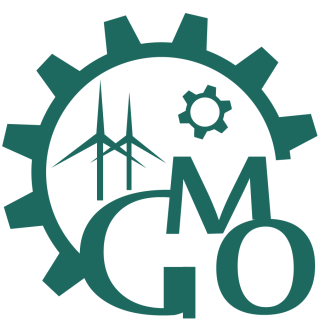REFERENCES
1. Li X, Du J, Liu P, Wang C, Hu X, Ghadimi P. Optimal choice of power battery joint recycling strategy for electric vehicle manufacturers under a deposit-refund system. Int J Prod Res 2023;61:7281-301.
2. Chen H, Zhang T, Gao Q, et al. Assessment and management of health status in full life cycle of echelon utilization for retired power lithium batteries. J Clean Prod 2022;379:134583.
3. Gong B, Gao Y, Li KW, Liu Z, Huang J. Cooperate or compete? A strategic analysis of formal and informal electric vehicle battery recyclers under government intervention. Int J Logist Res Appl 2024;27:149-69.
4. Wang N, Garg A, Su S, Mou J, Gao L, Li W. Echelon utilization of retired power lithium-ion batteries: challenges and prospects. Batteries 2022;8:96.
5. Feng Z, Luo N, Shalpegin T, Cui H. The influence of carbon emission reduction instruments on blockchain technology adoption in recycling batteries of the new energy vehicles. Int J Prod Res 2024;62:891-908.
6. Zhang C, Tian Y, Han M. Recycling mode selection and carbon emission reduction decisions for a multi-channel closed-loop supply chain of electric vehicle power battery under cap-and-trade policy. J Clean Prod 2022;375:134060.
7. Lai X, Huang Y, Deng C, et al. Sorting, regrouping, and echelon utilization of the large-scale retired lithium batteries: a critical review. Renew Sustain Energy Rev 2021;146:111162.
8. Zhao S, Ma C. Research on the coordination of the power battery echelon utilization supply chain considering recycling outsourcing. J Clean Prod 2022;358:131922.
9. Zhang H, Huang J, Hu R, Zhou D, Khan HUR, Ma C. Echelon utilization of waste power batteries in new energy vehicles: review of Chinese policies. Energy 2020;206:118178.
10. Zhang Z, Wang Y, Guo Y, Song H. Power battery closed-loop supply chain decision of green investment under different subsidy objects. Procedia Comput Sci 2023;221:1162-9.
11. Zhang C, Chen Y, Tian Y. Collection and recycling decisions for electric vehicle end-of-life power batteries in the context of carbon emissions reduction. Comput Ind Eng 2023;175:108869.
12. Bai J, Hu S, Gui L, So KC, Ma Z. Optimal subsidy schemes and budget allocations for government-subsidized trade-in programs. Prod Oper Manag 2021;30:2689-706.
13. Bai Y, Song S, Jiao J, Yang R. The impacts of government R&D subsidies on green innovation: evidence from Chinese energy-intensive firms. J Clean Prod 2019;233:819-29.
14. Zhang H, Zhu K, Hang Z, Zhou D, Zhou Y, Xu Z. Waste battery-to-reutilization decisions under government subsidies: an evolutionary game approach. Energy 2022;259:124835.
15. Tang Y, Zhang Q, Li Y, Li H, Pan X, Mclellan B. The social-economic-environmental impacts of recycling retired EV batteries under reward-penalty mechanism. Appl Energy 2019;251:113313.
16. Jena SK, Sarmah SP. Price competition and co-operation in a duopoly closed-loop supply chain. Int J Prod Econ 2014;156:346-60.
17. Liu L, Wang Z, Xu L, Hong X, Govindan K. Collection effort and reverse channel choices in a closed-loop supply chain. J Clean Prod 2017;144:492-500.
18. Savaskan RC, Van Wassenhove LN. Reverse channel design: the case of competing retailers. Manag Sci 2006;52:1-14.
19. Guo S, Choi T, Shen B. Green product development under competition: a study of the fashion apparel industry. Eur J Oper Res 2020;280:523-38.
20. Zhang T, Li P, Wang N. Multi-period price competition of blockchain-technology-supported and traditional platforms under network effect. Int J Prod Res 2023;61:3829-43.
21. Tang Y, Zhang Q, Li Y, Wang G, Li Y. Recycling mechanisms and policy suggestions for spent electric vehicles’ power battery - a case of Beijing. J Clean Prod 2018;186:388-406.
22. Wang N, He Q, Jiang B. Hybrid closed-loop supply chains with competition in recycling and product markets. Intl J Prod Econ 2019;217:246-58.
23. Giri B, Dey S. Game theoretic analysis of a closed-loop supply chain with backup supplier under dual channel recycling. Comput Ind Eng 2019;129:179-91.
24. Wei J, Wang Y, Zhao J, Santibanez Gonzalez ED. Analyzing the performance of a two-period remanufacturing supply chain with dual collecting channels. Comput Ind Eng 2019;135:1188-202.
25. Zhou Y, Zhang Y, Wahab M, Goh M. Channel leadership and performance for a closed-loop supply chain considering competition. Transp Res E Logist Transp Rev 2023;175:103151.
26. Suvadarshini P, Biswas I, Srivastava SK. Impact of reverse channel competition, individual rationality, and information asymmetry on multi-channel closed-loop supply chain design. Int J Prod Econ 2023;259:108818.
27. Boyaci T, Gallego G. Supply chain coordination in a market with customer service competition. Prod Oper Manag 2004;13:3-22.
28. Majumder P, Srinivasan A. Leadership and competition in network supply chains. Manag Sci 2008;54:1189-204.
29. Wang S, Hu Q, Liu W. Price and quality-based competition and channel structure with consumer loyalty. Eur J Oper Res 2017;262:563-74.
30. Mitra S, Webster S. Competition in remanufacturing and the effects of government subsidies. Int J Prod Econ 2008;111:287-98.
31. Mo H, Wen Z, Chen J. China’s recyclable resources recycling system and policy: a case study in Suzhou. Resour Conserv Recycl 2009;53:409-19.
32. Aksen D, Aras N, Karaarslan AG. Design and analysis of government subsidized collection systems for incentive-dependent returns. Int J Prod Econ 2009;119:308-27.
33. Zhang Y, Hong Z, Chen Z, Glock CH. Tax or subsidy? Design and selection of regulatory policies for remanufacturing. Eur J Oper Res 2020;287:885-900.
34. Li B, Chen W, Xu C, Hou P. Impacts of government subsidies for environmental-friendly products in a dual-channel supply chain. J Clean Prod 2018;171:1558-76.
35. Yi Y, Liu S, Fu C, Li Y. Joint tax-subsidy for a manufacturing-recycling system under further extended producer responsibility. Sustain Prod Consump 2021;28:610-23.
36. Yu F, Guo Y, Le-Nguyen K, Barnes SJ, Zhang W. The impact of government subsidies and enterprises’ R&D investment: a panel data study from renewable energy in China. Energy Policy 2016;89:106-13.
37. Chang X, Wu J, Li T, Fan T. The joint tax-subsidy mechanism incorporating extended producer responsibility in a manufacturing-recycling system. J Clean Prod 2019;210:821-36.
38. Wang Y, Fan R, Shen L, Miller W. Recycling decisions of low-carbon e-commerce closed-loop supply chain under government subsidy mechanism and altruistic preference. J Clean Prod 2020;259:120883.
39. Zhang Z, Yu L. Altruistic mode selection and coordination in a low-carbon closed-loop supply chain under the government’s compound subsidy: a differential game analysis. J Clean Prod 2022;366:132863.
40. Lai X, Huang Y, Gu H, et al. Turning waste into wealth: a systematic review on echelon utilization and material recycling of retired lithium-ion batteries. Energy Storage Mater 2021;40:96-123.
41. Turner JM, Nugent LM. Charging up battery recycling policies: extended producer responsibility for single-use batteries in the european union, canada, and the united states. J Ind Ecol 2016;20:1148-58.
42. Gu H, Liu Z, Qing Q. Optimal electric vehicle production strategy under subsidy and battery recycling. Energy Policy 2017;109:579-89.
43. Gu X, Ieromonachou P, Zhou L, Tseng M. Developing pricing strategy to optimise total profits in an electric vehicle battery closed loop supply chain. J Clean Prod 2018;203:376-85.
44. Liu W, Liu W, Shen N, et al. Pricing and collection decisions of a closed-loop supply chain with fuzzy demand. Int J Prod Econ 2022;245:108409.
45. Wang Y, Hua Z, Wang J, Lai F. Equilibrium analysis of markup pricing strategies under power imbalance and supply chain competition. IEEE Trans Eng Manage 2017;64:464-75.





